Spectrum Innovation Act of 2011:
Will the "unlicensed auction" provisions lead to another "D Block Auction" fiasco?
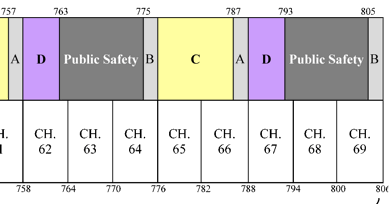
What if they had an auction and no one came? This is basically what happened in the 2008 D block auction where FCC declared, “The provisionally winning bid for the D Block license, however, did not meet the applicable reserve price and thus did not become a winning bid.”
Of course in reality only one firm bid showing essentially zero interest in the package offered. Why? The basic reason was that the package that was up for sale was so poorly defined that a potential bidder with an MBA on his staff could not possibly estimate either potential costs or possible income. It was unclear what level of service the D block owner had to provide to public safety community and it was unclear if he would get any income from public safety use of D block spectrum that would, in effect, deny commercial use for a period. Could the licensee charge for public safety use of D block in excess of x% occupancy? At the time of the auction no one knew.
FireceWireless described the new legislation as follows:
The proposal to require unlicensed spectrum to be auctioned is drawing fire from the tech community. In essence, companies that might be interested in building products to work on unlicensed spectrum would be required to pay for the spectrum despite the fact that they wouldn't receive any exclusive rights to it. Confusingly, if the total value of all bids for such spectrum were to exceed the highest single bidder, the spectrum would then become unlicensed. If, however, a single bidder sought exclusive use of the spectrum and outbid other bidders wanting the spectrum to be unlicensed, the spectrum would then go to the single bidder. (emphasis added)
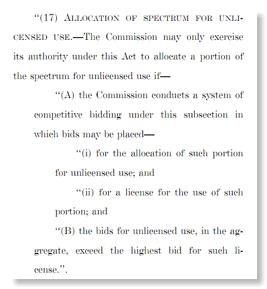
People opposed to this provision also compare it to the Unlicensed PCS (U-PCS) rules the Commission adopted in 1993 and which were a dismal failure. Opponents blame the fiasco over the user fees for equipment in the band which would have been about $5/unit.
These rules, adopted at the request of industry that drafted them were amazing complex and included provisions for both “isochronous devices” and “asynchronous devices” as requested by the commenting parties. My personal view on the failure of these rules is that they were much too complex, totaling over 3800 words and the parties requesting them did not realize that once they were enshrined in 47 C.F.R. any changes to them were protected by both the full faith and credit of the APA and the Commission’s long standing near indifference to technical rulemakings - especially when it gets distracted by “sexier” things such as DTV and broadband. By comparison, the original ISM band rules that spawned both Wi-Fi and Bluetooth consisted of exactly 398 words! I think a key factor of U-PCS’ failure was the extreme complexity and inflexibility that was demanded by the petitioners and FCC acceded to.
Given that most unlicensed bands are “damaged goods” as previously stated, and that most unlicensed bands are really very specific provisions for narrow spectrum slivers, e.g. 15.233, requiring auctions for any new unlicensed band seems like regulatory overkill. On the other hand allowing such type of auctions and giving guidances of what considerations should be used in deciding on them might be constructive.
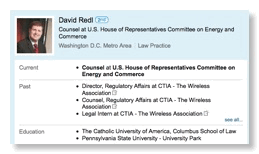
Spectrum Innovation Act of 2011:
Will the Party in Favor of Section 104 Please Stand Up?
The draft deals with several topics. FastNetNews published a Republican staff memo which is a good summary. The Republican staff summarizes the bill’s contents as:
The first is a discussion draft that authorizes an as yet unspecified amount for construction of an interoperable public safety network on the 24 MHz of spectrum cleared for public safety by the 2005 DTV legislation, creates a governance structure for construction and operation of the public safety network, and authorizes incentive auctions.
However, what got a lot of attention at Thursday’s meeting was Section 104 which the staff described as follows:
Requires that any spectrum made available for commercial use must be done so through auction, regardless whether the spectrum is to be made available on a licensed or unlicensed basis. If the sum of the bids of the parties that prefer unlicensed use of particular spectrum exceeds the highest individual bid for licensed use, the spectrum will be made available on an unlicensed basis. This approach is modeled after FCC Office of Strategic Planning Working Paper No. 43. This section also requires new unlicensed devices to coordinate with a database to determine which spectrum bands are available for operation..
CTIA is rumored to be the proponent of this provision, but CTIA’s Christopher Guttman-McCabe’s testimony on Friday never mentions “unlicensed” at all. Indeed, it isn’t clear if anyone is publicly in favor of this provision, yet it somehow appeared in the bill. Would whoever is in favor of Section 104 please stand up and tell us why it is a good idea?
Note that the legislation would apply to ALL new unlicensed bands. It assumes that all bands are the same and could be equally used for licensed or unlicensed use. Note that for the case of the ISM bands used for Wi-Fi and Bluetooth, the band use is secondary to both ISM devices (e.g. microwave ovens), military radars, and amateur radio use. Not much demand for licensed use here is there! The 57-64 GHz band is shared with federal government use and is subject to odd radio propagation due to absorption by oxygen molecules that limits useful ranges to less than a mile. Again not a hotbed of licensed interest. So why is this a good idea for all unlicensed bands?
Most unlicensed bands are really “damaged goods”. The unlicensed community has made something useful out of bands where they had great technical flexibility to innovate. While giving the FCC the option of use auctions in making licensed/unlicensed decisions might be a good idea for bands that are not damaged goods, requiring it in all cases is really a bad idea.
If the committee is so interested in “innovation”, why doesn’t it ask why Section 7 is broken?
UPDATE
GigaOm has a piece on the topic of Section 104 with the title “How Congress’ spectrum bills hurt the tech community”. The URL implies a stronger viewpoint: http://gigaom.com/broadband/how-congress-spectrum-bills-screw-the-tech-community/ It includes this interesting observation:
There’s another wacky issue with unlicensed spectrum — all of the airwaves would be auctioned off in geographic blocks which means that there would be no nationwide unlicensed spectrum block created. So even if local communities or corporate entities interested in promoting unlicensed spectrum bought out the airwaves, they’d only have access to the ones in their local areas. This is how wireless providers buy their spectrum, and it can lead to some operators having a hard time covering certain markets. And while a local municipality might want to buy unlicensed spectrum to offer its citizens Super Wi-Fi or another service over those airwaves, getting low-cost devices for only one area would be a challenge. Device makers can’t provide cheap electronics for smaller markets.
GigaOm, with its much greater resources than your blogger, also doesn’t know who is pushing this bill.
Another viewpoint: A GOP Own-Goal on Spectrum Policy from Forbes blog
When Rupert Murdoch Used to Call Me at FCC
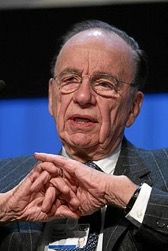
Chairman Hundt was going to attend the opening of the ITU Plenipotentiary Conference in Kyoto Japan along with VP Gore. Scott Harris had recently joined FCC and was getting the International Bureau up and going at the time and had trouble finding the resources to plan the Chairman’s trip. I approach Scott and said that since I had experience in Japan I would be glad to be of assistance in any way I could. He graciously accepted the offer.

Sure enough, a few days later the phone rang in my office and I heard “Rupert Murdoch here” in an Aussie accent. In that call and one later one Murdoch provided useful information on the structure of the Hong Kong regulator and the hot issues there. He also made a strong pitch for inviting Chmn. Hundt on his yacht for a dinner tour of Hong Kong harbor and presumably some conversation. I dutifully reported this to appropriate people involved in the trip planning, but before anyone had time to decide on details of the Hong Kong side trip a schedule conflict for Chmn. Hundt popped up concerning the need for him to speak at a spectrum user group conference in the US at the same time. as the Hong Kong visit.
So the Hong Kong side trip was cancelled and Murdoch never called me back again. I thought we had become friends.
Radar/Communications Spectrum Sharing: ISART 2011
On July 27-29 NTIA will host the 12th Annual International Symposium on Advanced Radio Technologies (ISART) at its Boulder, CO Institute for Telecommunications Sciences. The theme this year is “Developing Forward-Thinking Rules and Processes to Fully Exploit Spectrum Resources” with a special focus on radar bands.
For the third time since his retirement from FCC, NTIA was kind enough to invite your blogger to speak at this important meeting, but due to a conflicting family event, he is unable to attend. However, in view of the importance of this issue, he volunteered to produce a written paper on the topic to help stimulate discussion. Here is a link to that paper.
The paper starts by stating the need for new spectrum to speed economic growth which is important for both our society and for national security. Spectrum allocation should not be viewed as a zero sum game, but it is critical to develop innovative sharing techniques to get the maximum use of this limited resource. Since radar systems are a large user of spectrum and are difficult to share with using conventional approaches, this is a very timely conference.
TDWR
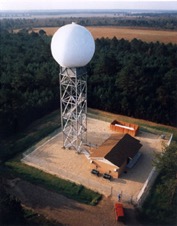
The main part of the paper advocates joint design of new radar systems with communications experts in order to maximize spectrum sharing and consider financial cost sharing of features that facilitate sharing subject to the radar mission needs. Just as the stealth bomber design involved a unique team of aeronautical engineers and EEs who could trade off flying issues with radar visibility issues, joint design of radar/comm systems may well result in sharing breakthroughs. While current legislation does not allow this type of cost sharing, it is not beyond the reach of new legislation that has been discussed. The paper points out that while full duplex paired spectrum with “24/7 and 1000 ms/ 1 s” time availability has been the norm for commercial systems, the decline of voice minutes and the domination of packetized traffic means that partial time availability, synched with radar rotation, could result in productive access to radar spectrum. While nonmilitary backlobe radio have not improved in 40+ years, advances in radio astronomy antennas indicate that new designs can significantly decrease backlobe levels and facilitate sharing. Such designs are expensive, but cost sharing could address that.
if you are interested, here, again, is the link.
"Transmitters Don't Use Up Spectrum, Receivers Do!"

The title of this post is an old truism in spectrum policy. It is also something your blogger never heard until he started working at FCC, so it is probably not discussed much outside some groups in FCC and NTIA. The basic point is shown in the the old analog TV allotment table (47 C.F.R. 73.606) which shows what TV channels could be used in each city for NTSC. Excerpts for SF and Dallas are shown below:
Note the UHF channels (>14) . For SF, the city that CTIA is boycotting, the channels are 14, 20, 26, 32, 38, and 44 - the same analog channels as the Washington DC area. For Dallas they include 27, 33,and 39. See the pattern? In a given city, the UHF TV channels were spaced 6 channels apart. (Someone might point out that Washington has channel 22, between channels 20 and 26. True in a way, but it is not in Washington, it is actually in Annapolis.)
Each analog TV channel took one 6 MHz channel. The increment of 6 was to protect the mediocre TV receivers that were expected when UHF TV was authorized in 1952 “Sixth Report and Order”. They are a direct result of the channel separations mandated by “UHF taboos” in Table II of 73.698 which in turn resulted from assumptions of the ability of TV receivers to reject nearby signals and limits on how much they would unintentionally radiate internal signals that might interfere with neighbor’s reception. Again, these were all 1952 estimates - certainly based on earlier data since the FCC decision was made in 1952. A sad observation on the state of spectrum management at FCC in the past is that FCC never had the resources and courage to change this misuse of UHF spectrum as radio technology was revolutionized during the period 1952 - 1986. I cut off at 1986 because that was around the time that that HDTV came to center stage and DTV started looking feasible. Only the arrival of DTV finally removed the limitation on using only every 6th UHF channel. It is clear, to your blogger at least, that technology was available by the 1970s to have receivers with more robust interference immunity to allow more intense use of UHF TV even without DTV, yet the FCC did not have the political will to do so as it would have infuriated the TV interests that dominated FCC spectrum policy deliberations at that time.
12. Include receiver tolerances in regulation (either through (1) additional incentives, (2) mandates, or (3) some combination of incentives and mandates) to be used until can migrate to “interference temperature” regulatory scheme and to be used for the long term where use of interference temperature would be inapplicable; e.g., for systems in which licensees do not have control over receivers.
14. Issue Notice of Inquiry to characterize current and future receiver environments and to explore issues to consider, such as, performance parameters and protection for legacy receivers.
A key problem in spectrum innovation is that endless FCC deliberations discourage investment in wireless R&D and a key issue in such endless deliberations is differing expectations about receiver performance by incumbents and potential entrants. (“Harmful interference” is also an ill defined issue at FCC that extends deliberations and is usually related to receiver performance.)
Both the lengthly and inconclusive AWS-3 controversy and the current GPS/LightSquared controversy (not to mention the PCS H block issue) have at their root the issue of receiver performance expectation. Reasonable people could disagree about what are appropriate expectations for T-Mobile’s cell phone receivers - in the AWS-3 case - and GPS receivers - in the LightSquared case - with respect to adjacent band signal rejection. As in the case of harmful interference, NTIA and FCC need to develop a way to resolve receiver expectation issues in a timely way if they want to encourage technical innovation and the capital formation that is an integral part of it. Such resolutions need not make every party - or even any party - happy, but they are essential to maintain US leadership in both wireless technology and wireless services. The above SPTF recommendations would be a good place to start!
New Cellular Advocacy Group Trivializes Spectrum Policy Issues
A new group, Mobile Future,
is dedicated to educating the public and key decision makers on innovations in the wireless industry that have transformed the way Americans work and play and to advocate continued investment in wireless technologies. We look forward to keeping you in the loop about our news and events.
It apparently is trying to do this by producing PR that trivializes key spectrum issues, rather than encouraging productive dialogue on the issue or even improving the governmental decisionmaking process.
Mobile Future is a mixture of cellular industry groups that partially overlaps the CTIA membership and some public interest groups. The industry membership includes AT&T, T-Mobile, Alcatel-Lucent, Qualcomm, Cisco, and Ericsson but does not include Sprint, Verizon, Nokia, or Motorola. Other members include Black College Communication Association, Labor Council for Latin American Advancement, National Gay and Lesbian Chamber of Commerce, and the National Association of Neighborhoods. You can be pretty sure that the first group of members named above are paying the bills and the second groups is there for “window dressing”.

Note that the “pie” shown here, only includes spectrum used by the sponsors with the except of “radio and TV” - would that spectrum management be so simple. In reality there is military use, there is FAA use, there is local, state, and federal public safety use. There is even amateur radio use, not to forget radio astronomy.
But is mobile capacity really proportional to available spectrum? We will not here get into the previously reported NAB and CTIA battling reports. Your blogger is closer to CTIA on that issue than NAB. But the Mobile Future viewpoint is just too much to swallow.
Ofcom, FCC’s well respected UK counterpart, released in January a report entitled 4G Capacity Gains. The study starts with a bold and simple statement that is usually fuzzified in the US cellular industry’s presentations:

- Technology – the cell spectrum efficiency that can be realised by a given feature set
- Spectrum – the bandwidth allocated to a network
- Topology – the mixture of cell sizes and local environments in the network
The report concludes,
“ technology improvements alone will not meet forecast demand increases and that a mixture of changes in topology and spectrum will be required to meet this increase in demand. It is recommended that previous studies into the dimensioning of future spectrum requirements for 4G networks are revisited with the revised cell spectrum efficiency results recommended by this study in mind.”
Thus spectrum alone is not enough to solve the problem, changes in “topology” or number of cells is critical to meet capacity goals.
How is the US doing in this area? A topic the mainstream cellular industry doesn’t like to talk about. Here is one observer’s viewpoint.
FastNetNews reports
Robin Bienenstock of Bernstein makes clear why the U.S. has wireless issues: less investment. “Let's take California and Spain as an example. Telefonica has some 33,000 base stations in Spain (yes, miserable, economically imploding Spain). Conveniently, California is a similar size, has a similar topography, and has very similar population density.”
Yes, the cellular industry need more spectrum. But a singular focus on spectrum ignores the need for more infrastructure and improved technology. Indeed, the Commission’s sometimes indifferent view towards new technology and the capital investment needed to develop it is also a detriment to more wireless services to serve society and help the economy. Finally, the singular focus on spectrum is leading to more and more “food fights” over spectrum that FCC (and NTIA) is/are unable to resolve in a timely way.
UPDATE
Apparently, the real CTIA is perfectly capable of trivializing spectrum policy also. here is a tweet that CTIA sent out several times on July 22:

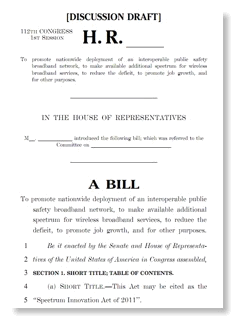

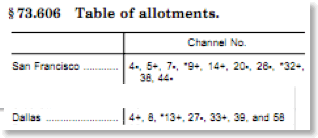
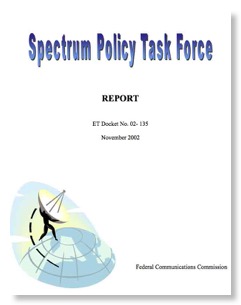
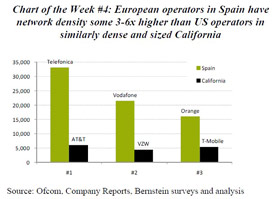


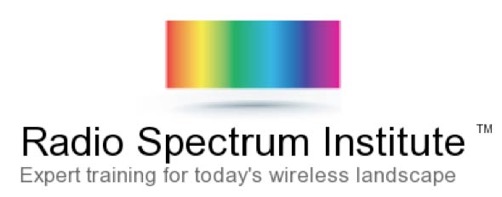


![Validate my RSS feed [Valid RSS]](valid-rss-rogers.png)

